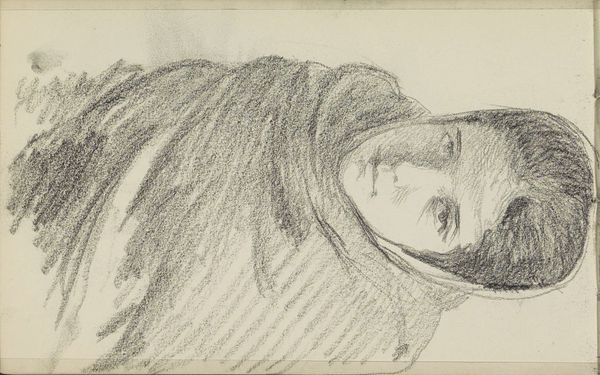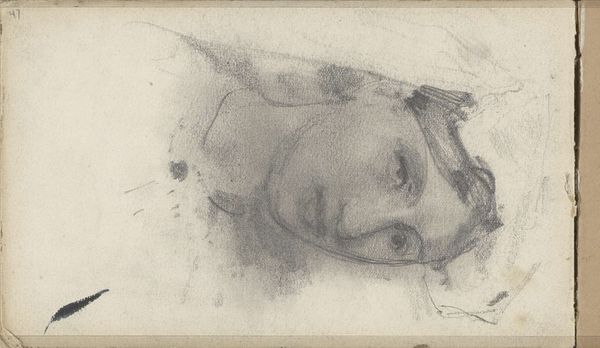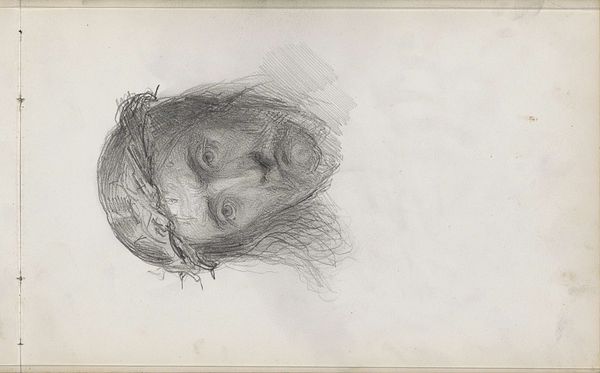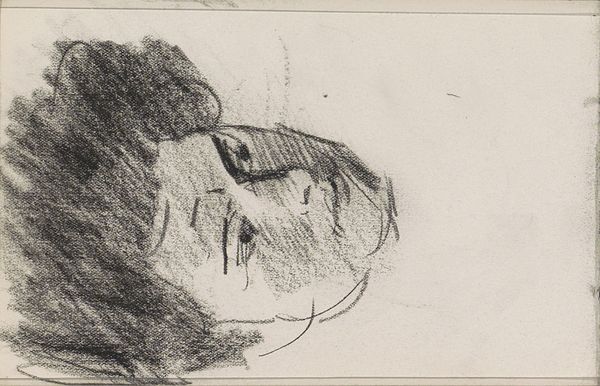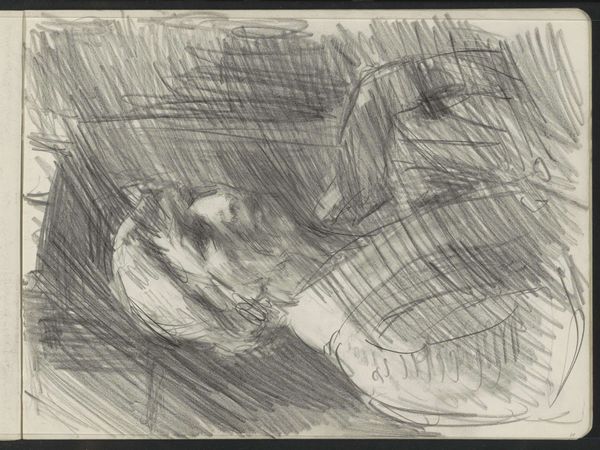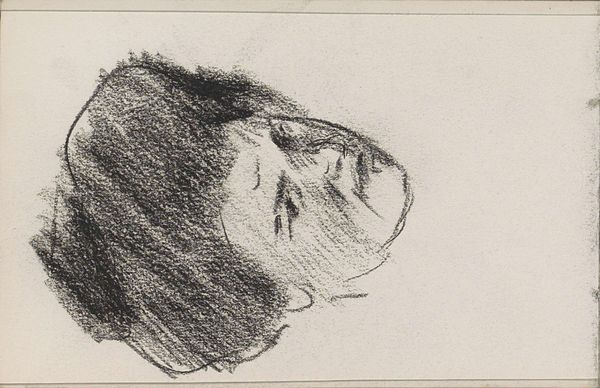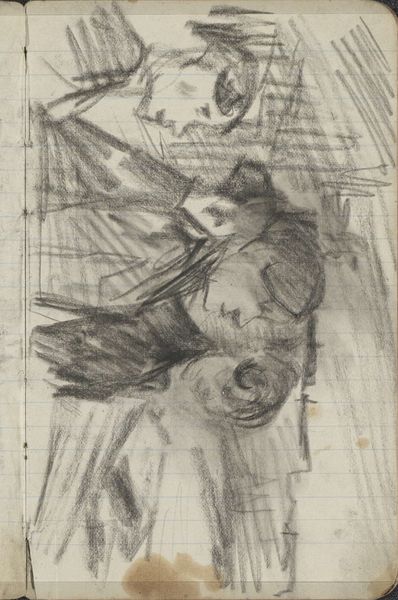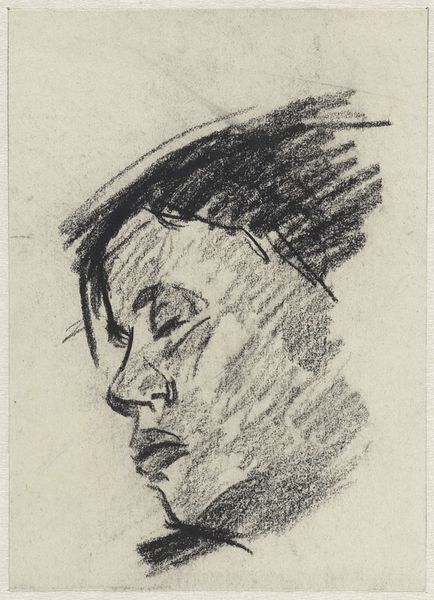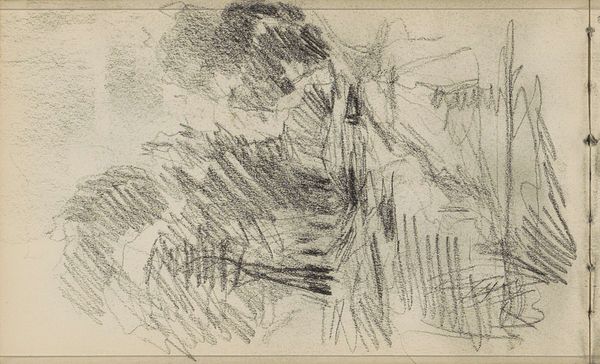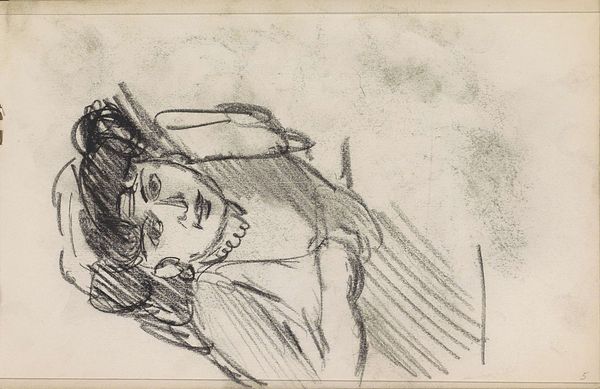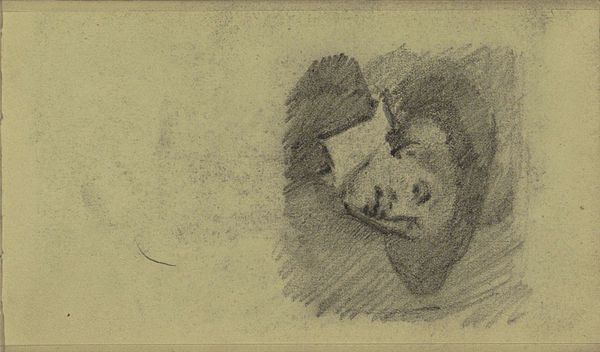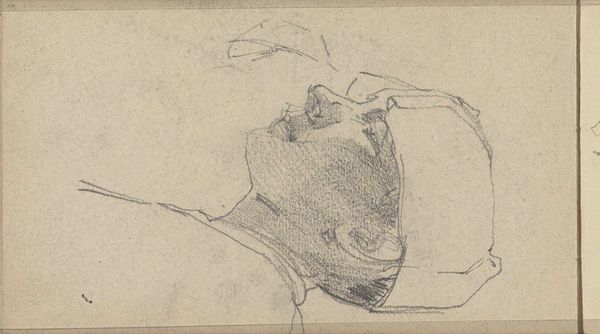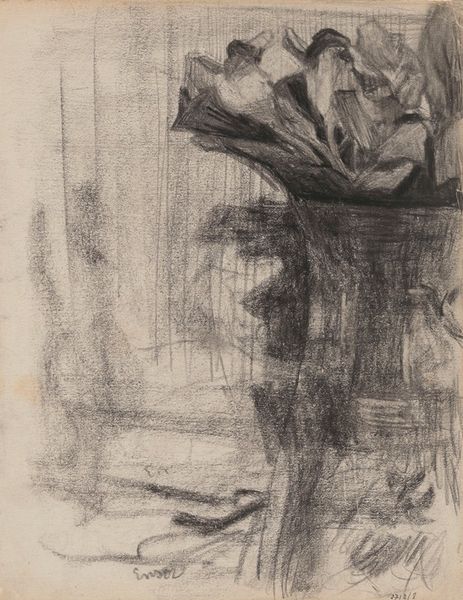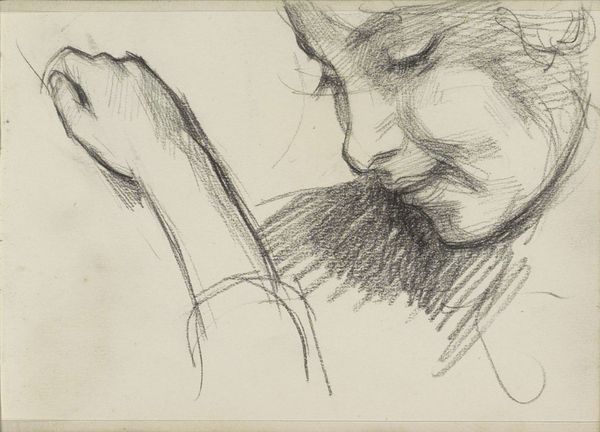
drawing, pencil
#
portrait
#
drawing
#
figuration
#
pencil drawing
#
pencil
Copyright: Public Domain: Artvee
Editor: Here we have John Singer Sargent's "Two Heads," a pencil drawing from between 1875 and 1880. It's really striking how unfinished and intimate it feels. What do you see in this piece? Curator: It is interesting to view Sargent through the lens of his societal milieu. The sketch, especially, allows a glimpse into the gender dynamics of his era, despite the limited amount of historical information regarding its origin or models. Think about the societal expectations placed on both men and women during the late 19th century, how appearances, decorum, and even artistic representation were policed and performed differently across genders. Do you think the unfinished quality hints at a resistance to those expectations? Editor: That's fascinating. I hadn't considered the societal pressures in relation to the drawing's style. The figure on the left, hooded and partially obscured, seems to carry a sense of hidden identity or suppressed expression. Is this figure intended to depict someone specific? Curator: The lack of definite answer emphasizes how the sketch opens a conversation regarding representation. We see not just the sketched individual, but Sargent’s act of looking. The gazes represented, both the viewer's and Sargent's, might symbolize agency – both his agency as the artist and perhaps, controversially, the lack of agency afforded to women within a patriarchal structure. How does it make you consider issues of portraiture, objectification, and the artist’s hand? Editor: So, rather than seeing it as a simple study, we can view "Two Heads" as Sargent grappling with the politics of portraying people? It really challenges our contemporary gaze too, making us question our assumptions when viewing historical portraits. Curator: Exactly! It's a starting point to dissect the complex web of power, gender, and artistic intention of that era. I’m now thinking about other portrait artists of the time and how they grappled with gender and identity... Editor: Me too, I appreciate seeing the artwork within the social context. It gives me much to reflect on.
Comments
No comments
Be the first to comment and join the conversation on the ultimate creative platform.
